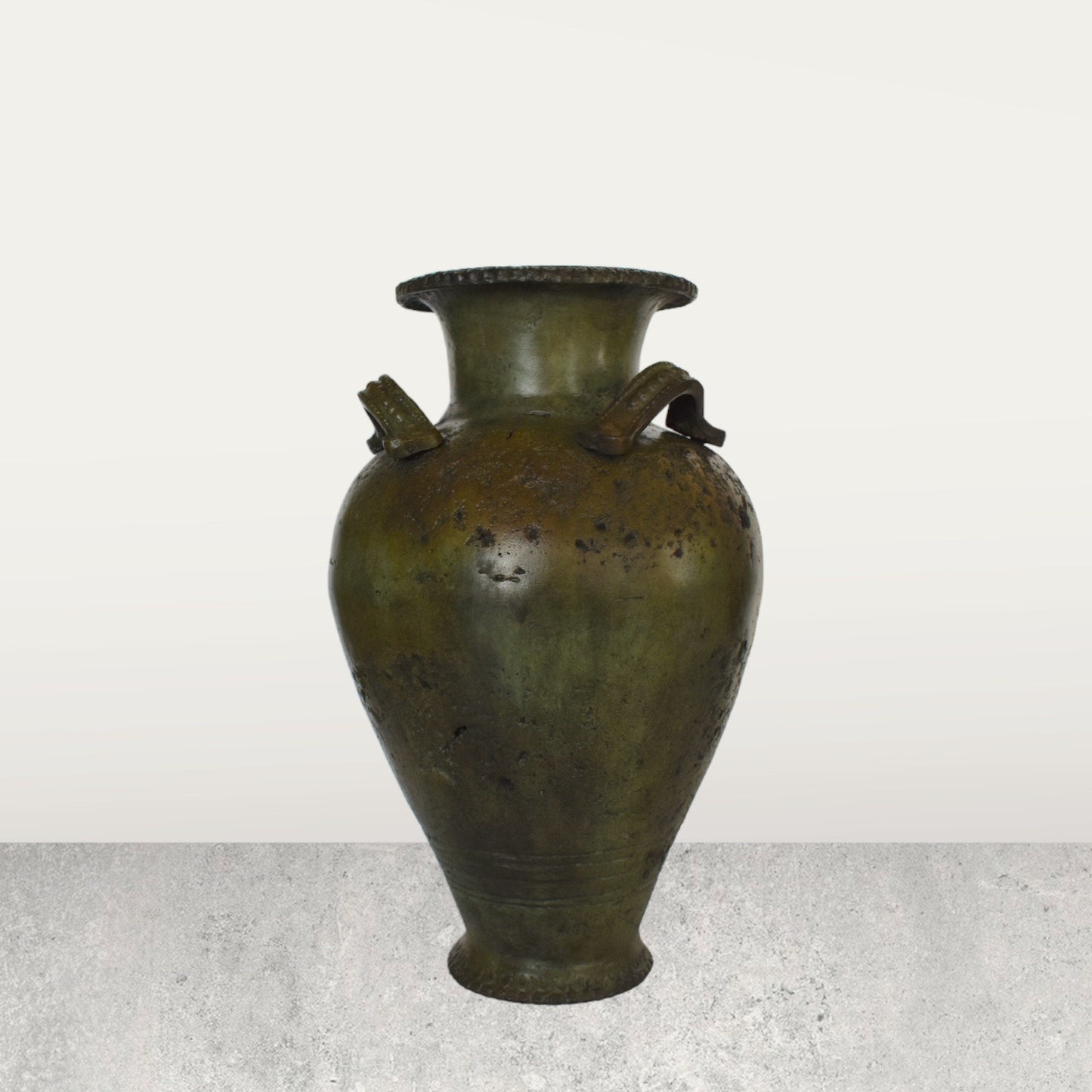Gallery Demeter
Hydria - Type of water-carrying vessel - A prize in tournaments and competitions - 700-300 BC - Pure Bronze Statue
Hydria - Type of water-carrying vessel - A prize in tournaments and competitions - 700-300 BC - Pure Bronze Statue
Regular price
€579,90 EUR
Regular price
Sale price
€579,90 EUR
Unit price
per
Tax included.
Shipping calculated at checkout.
Couldn't load pickup availability
Item Specifics
Condition: New, Made in Greece.
Material: Pure Bronze
Height: 26 cm - 10,2 inches
Width: 16 cm - 6,3 inches
Length: 15 cm - 5,9 inches
Weight: 3050 g
The hydria is a form of Greek pottery from between the late Geometric period (7th century BC) and the Hellenistic period (3rd century BC). The etymology of the word hydria was first noted when it was stamped on a hydria itself, its direct translation meaning 'jug'.
It is a type of water-carrying vessel, but it had many other purposes. As time progressed the hydria developed into many forms, some of which were smaller or of a different material. These variants were decorated with detailed figures to represent Greek mythological stories, as well as scenes of daily life, providing extensive insight into Ancient Greek culture and society.
Originally, the hydria's purpose was for the collection of water, but it also held oil and the votes of judges. The design of the hydria allowed for the efficient collecting and pouring of liquids as it possessed three handles: two horizontal ones at its sides and a vertical one on its back. The shape of the hydria was altered in the 5th century BC from having a wide body and broadly rounded shoulders, to a design that incorporated flatter shoulders that met the body at an angle.This was done to ease the task of carrying water to and from the home and places of gathering. The vessel itself could be carried, and the vertical handle allowed the person to pour it easily, which aided in tasks such as diluting wine in a krater.
The hydria also acted as a funerary urn containing ashes. This function was primarily associated with the hadra hydria. The funerary ceremony was conducted by a royal official who recorded the name of the deceased, their origin, the date of burial and a general inscription. The bronze hydria acted as a prize in tournaments and competitions. This is evident from the painted scenes on vases that illustrate victors carrying a hydria as a reward and inscriptions that identified the bronze hydria as a prize. The high value of a bronze hydria meant it could also function as a dedication to sanctuaries.
ΣΕΜ 46-018 ΥΔΡΙΑ 16X26 ΕΚ - 150









